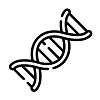9.5: Gametes and Fertilization
- Page ID
- 133682
\( \newcommand{\vecs}[1]{\overset { \scriptstyle \rightharpoonup} {\mathbf{#1}} } \)
\( \newcommand{\vecd}[1]{\overset{-\!-\!\rightharpoonup}{\vphantom{a}\smash {#1}}} \)
\( \newcommand{\id}{\mathrm{id}}\) \( \newcommand{\Span}{\mathrm{span}}\)
( \newcommand{\kernel}{\mathrm{null}\,}\) \( \newcommand{\range}{\mathrm{range}\,}\)
\( \newcommand{\RealPart}{\mathrm{Re}}\) \( \newcommand{\ImaginaryPart}{\mathrm{Im}}\)
\( \newcommand{\Argument}{\mathrm{Arg}}\) \( \newcommand{\norm}[1]{\| #1 \|}\)
\( \newcommand{\inner}[2]{\langle #1, #2 \rangle}\)
\( \newcommand{\Span}{\mathrm{span}}\)
\( \newcommand{\id}{\mathrm{id}}\)
\( \newcommand{\Span}{\mathrm{span}}\)
\( \newcommand{\kernel}{\mathrm{null}\,}\)
\( \newcommand{\range}{\mathrm{range}\,}\)
\( \newcommand{\RealPart}{\mathrm{Re}}\)
\( \newcommand{\ImaginaryPart}{\mathrm{Im}}\)
\( \newcommand{\Argument}{\mathrm{Arg}}\)
\( \newcommand{\norm}[1]{\| #1 \|}\)
\( \newcommand{\inner}[2]{\langle #1, #2 \rangle}\)
\( \newcommand{\Span}{\mathrm{span}}\) \( \newcommand{\AA}{\unicode[.8,0]{x212B}}\)
\( \newcommand{\vectorA}[1]{\vec{#1}} % arrow\)
\( \newcommand{\vectorAt}[1]{\vec{\text{#1}}} % arrow\)
\( \newcommand{\vectorB}[1]{\overset { \scriptstyle \rightharpoonup} {\mathbf{#1}} } \)
\( \newcommand{\vectorC}[1]{\textbf{#1}} \)
\( \newcommand{\vectorD}[1]{\overrightarrow{#1}} \)
\( \newcommand{\vectorDt}[1]{\overrightarrow{\text{#1}}} \)
\( \newcommand{\vectE}[1]{\overset{-\!-\!\rightharpoonup}{\vphantom{a}\smash{\mathbf {#1}}}} \)
\( \newcommand{\vecs}[1]{\overset { \scriptstyle \rightharpoonup} {\mathbf{#1}} } \)
\( \newcommand{\vecd}[1]{\overset{-\!-\!\rightharpoonup}{\vphantom{a}\smash {#1}}} \)
\(\newcommand{\avec}{\mathbf a}\) \(\newcommand{\bvec}{\mathbf b}\) \(\newcommand{\cvec}{\mathbf c}\) \(\newcommand{\dvec}{\mathbf d}\) \(\newcommand{\dtil}{\widetilde{\mathbf d}}\) \(\newcommand{\evec}{\mathbf e}\) \(\newcommand{\fvec}{\mathbf f}\) \(\newcommand{\nvec}{\mathbf n}\) \(\newcommand{\pvec}{\mathbf p}\) \(\newcommand{\qvec}{\mathbf q}\) \(\newcommand{\svec}{\mathbf s}\) \(\newcommand{\tvec}{\mathbf t}\) \(\newcommand{\uvec}{\mathbf u}\) \(\newcommand{\vvec}{\mathbf v}\) \(\newcommand{\wvec}{\mathbf w}\) \(\newcommand{\xvec}{\mathbf x}\) \(\newcommand{\yvec}{\mathbf y}\) \(\newcommand{\zvec}{\mathbf z}\) \(\newcommand{\rvec}{\mathbf r}\) \(\newcommand{\mvec}{\mathbf m}\) \(\newcommand{\zerovec}{\mathbf 0}\) \(\newcommand{\onevec}{\mathbf 1}\) \(\newcommand{\real}{\mathbb R}\) \(\newcommand{\twovec}[2]{\left[\begin{array}{r}#1 \\ #2 \end{array}\right]}\) \(\newcommand{\ctwovec}[2]{\left[\begin{array}{c}#1 \\ #2 \end{array}\right]}\) \(\newcommand{\threevec}[3]{\left[\begin{array}{r}#1 \\ #2 \\ #3 \end{array}\right]}\) \(\newcommand{\cthreevec}[3]{\left[\begin{array}{c}#1 \\ #2 \\ #3 \end{array}\right]}\) \(\newcommand{\fourvec}[4]{\left[\begin{array}{r}#1 \\ #2 \\ #3 \\ #4 \end{array}\right]}\) \(\newcommand{\cfourvec}[4]{\left[\begin{array}{c}#1 \\ #2 \\ #3 \\ #4 \end{array}\right]}\) \(\newcommand{\fivevec}[5]{\left[\begin{array}{r}#1 \\ #2 \\ #3 \\ #4 \\ #5 \\ \end{array}\right]}\) \(\newcommand{\cfivevec}[5]{\left[\begin{array}{c}#1 \\ #2 \\ #3 \\ #4 \\ #5 \\ \end{array}\right]}\) \(\newcommand{\mattwo}[4]{\left[\begin{array}{rr}#1 \amp #2 \\ #3 \amp #4 \\ \end{array}\right]}\) \(\newcommand{\laspan}[1]{\text{Span}\{#1\}}\) \(\newcommand{\bcal}{\cal B}\) \(\newcommand{\ccal}{\cal C}\) \(\newcommand{\scal}{\cal S}\) \(\newcommand{\wcal}{\cal W}\) \(\newcommand{\ecal}{\cal E}\) \(\newcommand{\coords}[2]{\left\{#1\right\}_{#2}}\) \(\newcommand{\gray}[1]{\color{gray}{#1}}\) \(\newcommand{\lgray}[1]{\color{lightgray}{#1}}\) \(\newcommand{\rank}{\operatorname{rank}}\) \(\newcommand{\row}{\text{Row}}\) \(\newcommand{\col}{\text{Col}}\) \(\renewcommand{\row}{\text{Row}}\) \(\newcommand{\nul}{\text{Nul}}\) \(\newcommand{\var}{\text{Var}}\) \(\newcommand{\corr}{\text{corr}}\) \(\newcommand{\len}[1]{\left|#1\right|}\) \(\newcommand{\bbar}{\overline{\bvec}}\) \(\newcommand{\bhat}{\widehat{\bvec}}\) \(\newcommand{\bperp}{\bvec^\perp}\) \(\newcommand{\xhat}{\widehat{\xvec}}\) \(\newcommand{\vhat}{\widehat{\vvec}}\) \(\newcommand{\uhat}{\widehat{\uvec}}\) \(\newcommand{\what}{\widehat{\wvec}}\) \(\newcommand{\Sighat}{\widehat{\Sigma}}\) \(\newcommand{\lt}{<}\) \(\newcommand{\gt}{>}\) \(\newcommand{\amp}{&}\) \(\definecolor{fillinmathshade}{gray}{0.9}\)Now that we’ve learned about genotypes, phenotypes, and various crosses, let’s put this all together. We will be creating our own gametes, then combining them with a classmate’s to see what the potential offspring would look like. Remember that some of these traits will use simple dominance, but some may demonstrate incomplete dominance.
In a designated place in the lab, there are bags of alleles for various physical traits. You will need to randomly grab TWO alleles for each trait. This determines your genotype, which you will record in the table below. Then, using the information written on the alleles and in the table, you will determine and record your phenotype as well.
| Trait | Type | Your Allele 1 | Your Allele 2 | Your Phenotype |
|---|---|---|---|---|
| Hair Color | Incomplete Dominance | |||
| Hair Texture | Incomplete Dominance | |||
| Freckles | Simple Dominance | |||
| Eye Color | Simple Dominance | |||
| Eye Shape | Simple Dominance | |||
| Nose Shape | Incomplete Dominance | |||
| Face Shape | Incomplete Dominance | |||
| Skin Color | Incomplete Dominance | |||
| Cleft Chin | Simple Dominance |
Now you need to work with a partner. Record your partner’s alleles and phenotype in the table below.
| Trait | Type | Partner Allele 1 | Partner Allele 2 | Partner Phenotype |
|---|---|---|---|---|
| Hair Color | Incomplete Dominance | |||
| Hair Texture | Incomplete Dominance | |||
| Freckles | Simple Dominance | |||
| Eye Color | Simple Dominance | |||
| Eye Shape | Simple Dominance | |||
| Nose Shape | Incomplete Dominance | |||
| Face Shape | Incomplete Dominance | |||
| Skin Color | Incomplete Dominance | |||
| Cleft Chin | Simple Dominance |
Now that you have recorded this information, you and your partner will each need to create a gamete with your respective alleles. You can do so by having one person place their two alleles for the first trait in a paper bag, randomly removing one, and recording the allele in the table below. Each person should randomly select one allele per trait and record the allele in its appropriate box until the “Your Gamete” and “Partner Gamete” columns are filled in. Then, using the information on the allele sticks and information below, determine the offspring phenotype in the last column.
| Trait | Type | Your Gamete Allele | Partner Gamete Allele | Resulting Offspring Phenotype |
|---|---|---|---|---|
| Hair Color | Incomplete Dominance | |||
| Hair Texture | Incomplete Dominance | |||
| Freckles | Simple Dominance | |||
| Eye Color | Simple Dominance | |||
| Eye Shape | Simple Dominance | |||
| Nose Shape | Incomplete Dominance | |||
| Face Shape | Incomplete Dominance | |||
| Skin Color | Incomplete Dominance | |||
| Cleft Chin | Simple Dominance |
Now, draw your, your partner’s and the offspring’s faces using the phenotypes.
| Your Face (Table 9.5) | Partner’s Face (Table 9.6) | Offspring’s Face (Table 9.7) |
What phenotypes do you share with the created offspring? Which phenotypes are different?
Did any similarities or differences surprise you? Why?
Did the offspring share more similarities with one “parent”? Why do you think that?


